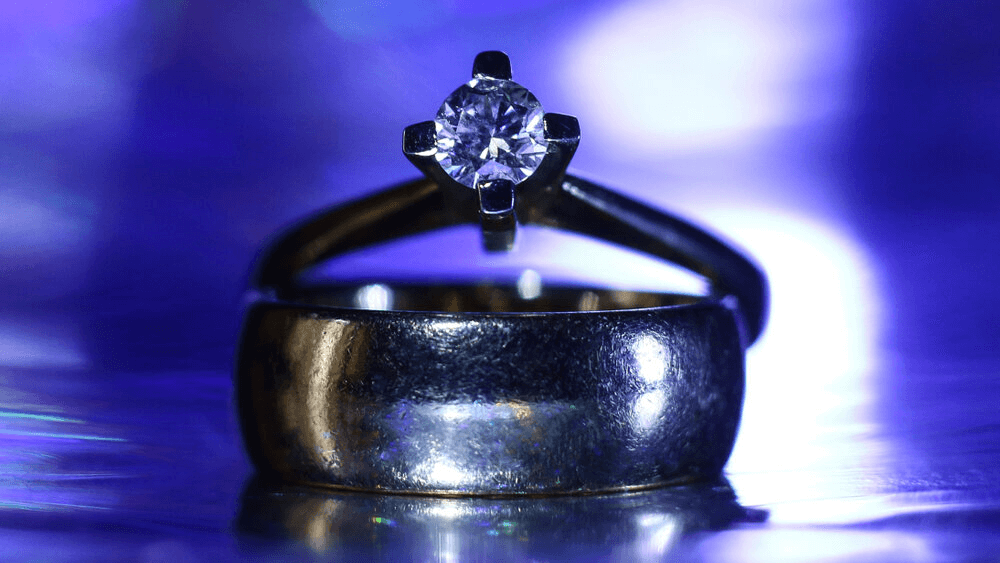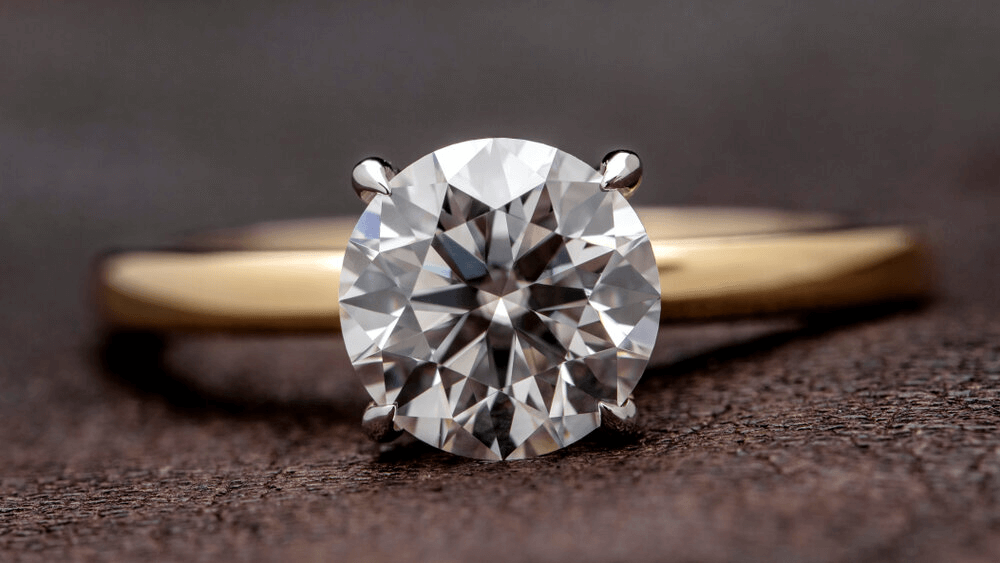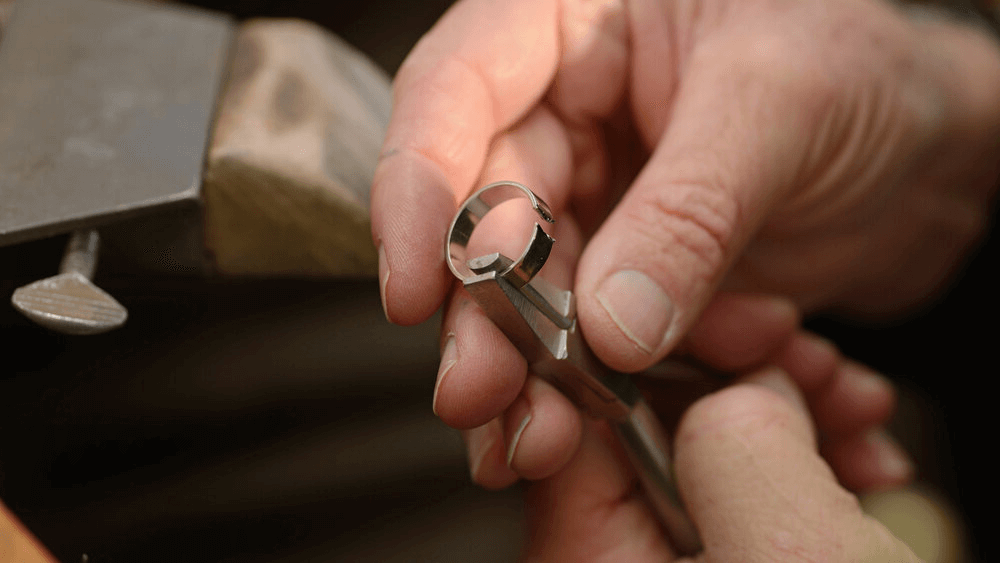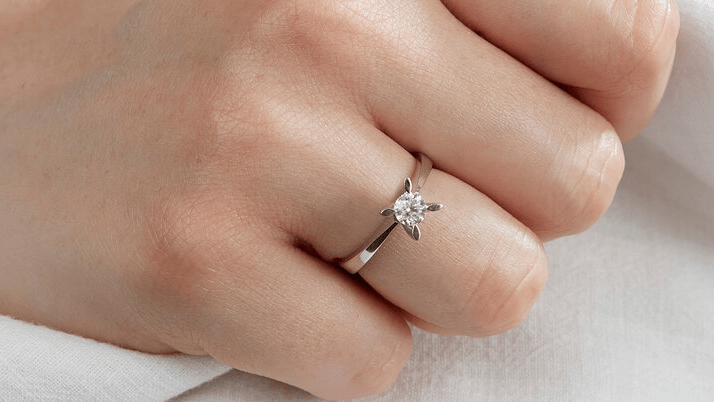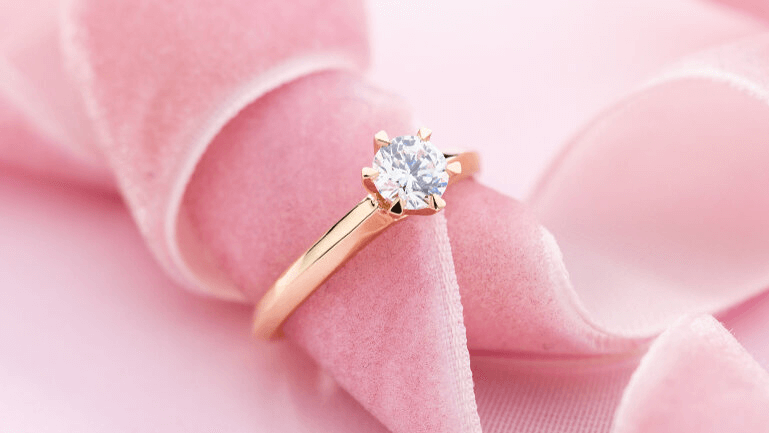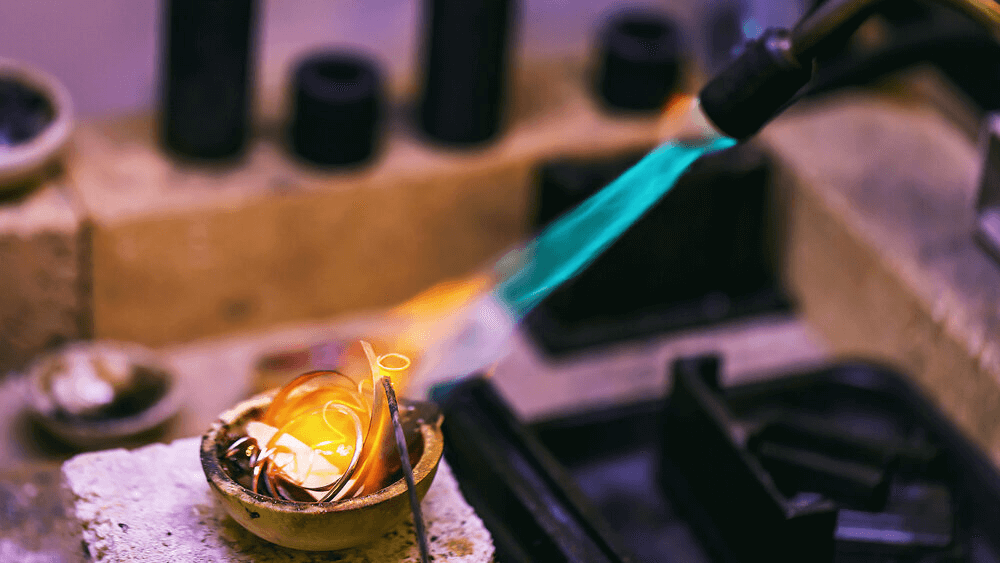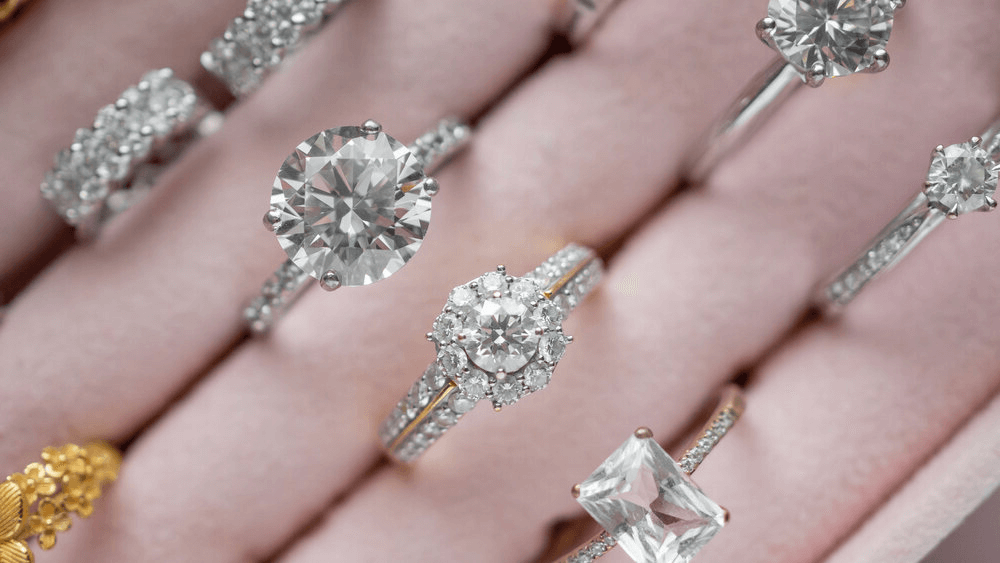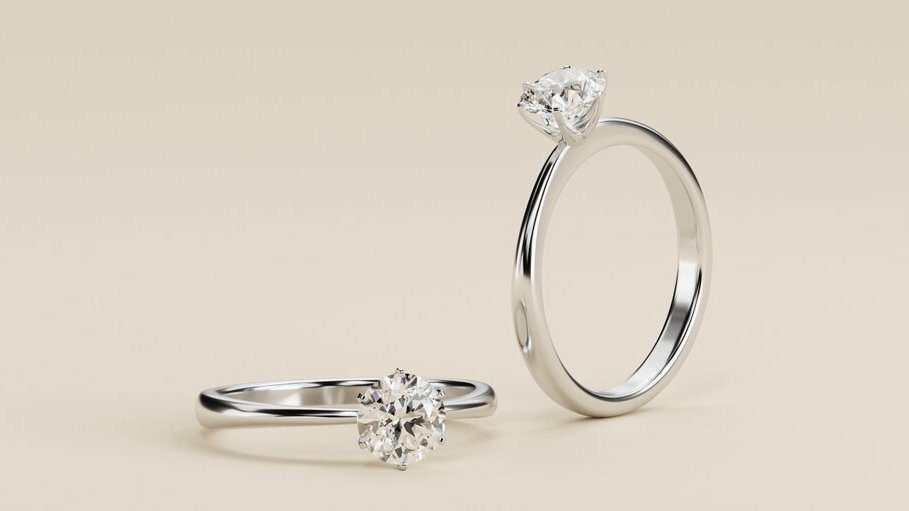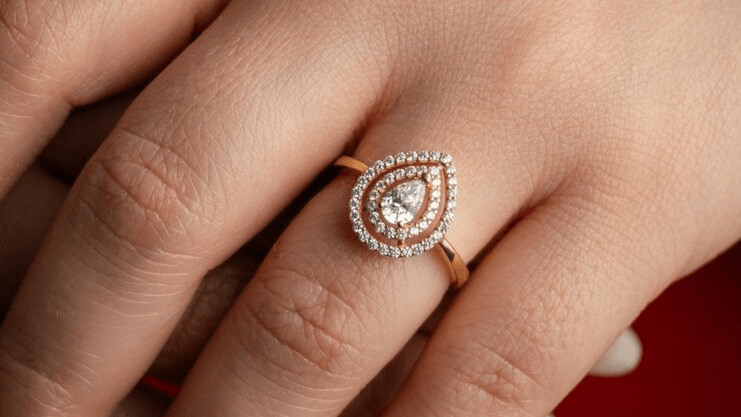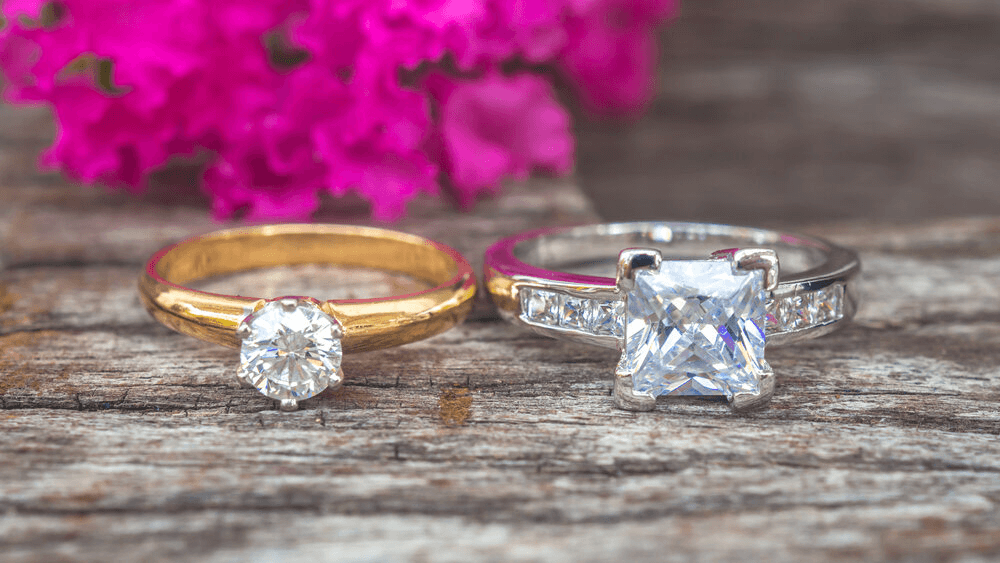14K Gold Engagement Rings: What Jewelers Won’t Tell You!

By Gary A.

Edited by Olivia H.
Published Nov 14, 2021
Edited on Dec 18, 2024
With its perfect balance of durability, affordability, and classic charm, 14K gold engagement rings offer a stunning blend of practicality and elegance that appeals to many couples.

- 7 Quick Tips for Buying a Diamond Engagement Ring and Examining 14K Gold
- Introduction
- What 14K Gold Looks Like
- 14 Karats: The Basics
- 14K Gold Cost Considerations
- Our Expert Take
- 8 FAQs
Before we dive deeper into the specifics, here are some practical tips to help guide your decision-making process:
7 Quick Tips for Buying a Diamond Engagement Ring and Examining 14K Gold
- Tip 1: Understand the Gold Purity: 14K gold is 58.3% pure gold mixed with alloys for strength. It’s less pure than 18K but more durable. Ensure the ring is marked with “14K” or “585” to confirm its authenticity.
- Tip 2: Check for Hallmarks Authentic: 14K gold should have a hallmark stamp indicating its purity. Look for “14K,” “14KT,” “585,” or a similar stamp inside the ring band.
- Tip 3: Examine the Gold Color: 14K gold comes in different colors like yellow, white, and rose, each mixed with different alloys. Check the uniformity of the color and note that white gold should have a bright, silvery appearance.
- Tip 4: Assess the Ring’s Construction: Inspect the craftsmanship of the ring. High-quality rings have smooth finishes, secure settings, and no rough edges. The prongs should firmly hold the diamond in place without any wobble.
- Tip 5: Evaluate the Diamond’s Setting: The setting of the diamond in 14K gold should be sturdy and well-crafted. A poorly set diamond can lead to future issues, like the stone becoming loose or falling out.
- Tip 6: Consider the Diamond’s 4Cs: While focusing on the gold, don’t overlook the diamond’s 4Cs: Cut, Color, Clarity, and Carat. These factors greatly affect the diamond’s quality and value.
- Tip 7: Test for Skin Reactions: Since 14K gold contains alloys, test the ring against your skin if you have metal allergies. Wear it for a while to ensure it doesn’t cause irritation or discoloration.
Now that you’ve got these practical tips, use Jeweler AI below to find the perfect engagement ring that suits your style and budget:
Introduction
Gold creates a stunning contrast with diamond. Its romantic appearance, luxurious shine and natural brightness make it an unrivalled option for many shoppers, but there’s every chance that, when you think of gold, you’re actually picturing a hue attributable to 14K gold, rather than pure gold.
What 14K Gold Looks Like
14 karat gold features an attractive and lustrous yellow color – unless, of course, we’re talking about a 14 karat rose or white gold. The hue is nowhere near as strong or as rich as it is in pure gold, but this is considered by many to be a benefit.
For many, the karat system for gold jewelry represents a compromise. As you gain strength and durability, you have to sacrifice more and more of the original beauty of gold, right?
Not necessarily.
Don’t get us wrong; pure gold is stunning. It is unlike any other natural element on earth, and striking enough to have motivated some of the most pivotal moments in human history.
For jewelry, however – and particularly for jewelry that is going to be worn every day – its color is perhaps a little too rich, and a little too bold.
Alloying gold removes some of that original color, and creates some beautiful ‘shades’ of gold that, in all likelihood, are what first spring to mind when you hear the word ‘gold’, rather than that pure shade of orange-yellow.
A 14k yellow gold is warm and radiant. Its yellow color is rich enough to stand out from the skin, and to contrast beautifully with a diamond, without being so rich that it looks garish – or clashes with the wearer’s clothing.
A 14k rose gold features a noticeable blush – a highly romantic shade of pink that, while distinctive, won’t appear too rosy or too feminine to be worn every day.
A 14k white gold, however, thanks to its rhodium plating, will appear much more like sterling silver: bright, colorless, and lustrous.
14 Karats: The Basics
Before you start making any decisions over strength vs color, it’s important to understand what 14 karats really means – and why it’s such a common occurrence in the world of fine jewelry.
Decoding the Purity and Composition of 14K Gold: Is it Real Gold?
Yes, 14K gold is an alloy containing real gold. While it is not pure, 14K gold jewelry features more gold than alloy, at a ratio of 14 parts gold to 10 parts alloy.
Alloying metals like copper, zinc, nickel, palladium, and silver are all combined with pure gold for strength and durability. Almost all gold jewelry features alloyed gold, rather than pure gold, with the exception of some pieces that are not intended to be worn with any regularity.
The more alloy is added to gold, the stronger it gets – and the weaker its distinctively orange-yellow color becomes. That’s why 9k gold features a very pale color – one that would become particularly noticeable if you were to compare a 9k gold ring alongside an 18k gold ring, for instance.
In each case, any jeweler would refer to both rings as ‘gold rings’ – although obviously, they would state whether they were 9k or 18k since the difference in value would be considerable.
14K gold enjoys a pretty comfortable position between these two karat types. Comprising just over 58% gold, and just under 42% alloy, 14K gold boasts many of gold’s most favored attributes, but none of its downfalls. A 14K gold ring is, indisputably, a real gold ring – and a far better investment (both financially and aesthetically) than a pure gold ring.
The Strength of 14K Gold
14K gold has a level of 2.5 to 4 on the Mohs hardness scale. It’s highly durable and more than capable of holding a diamond securely in place.
After all, beyond the durability of the band itself – and its ability not to show scratches, dents, or signs of warping – you’ve got to ensure that your ring is capable of keeping a diamond in place with only a few seemingly delicate prongs.
This is likely another reason why so many shoppers seem to prefer 14K gold over 18K gold. While 18K is strong enough for engagement rings, 14K gold has the edge in this department – and any shopper looking to keep their diamond as safe as possible, given its prominent position on the finger, will feel tempted by the additional strength offered by 14K gold.
14K gold is a particularly good option for skinny band engagement rings, since its strength ensures the band retains its shape during wear.
The Durability of 14K Gold
14 karat gold is strong enough to be worn every day and for many decades.
For this, however, you’ll want to make sure you’re looking at a solid 14k gold piece, rather than a ring that has merely been plated in gold, or one advertised as ‘gold vermeil’.
Solid gold, whether 14k , 18k or 10k, won’t undergo any unwanted changes in color, which is exactly what happens to gold plated jewelry as the upper surface wears away over time. If that were to happen, you’d have to go through the expensive process of having your diamond set within a new ring – something nobody wants to go through, even if it’s years from now.
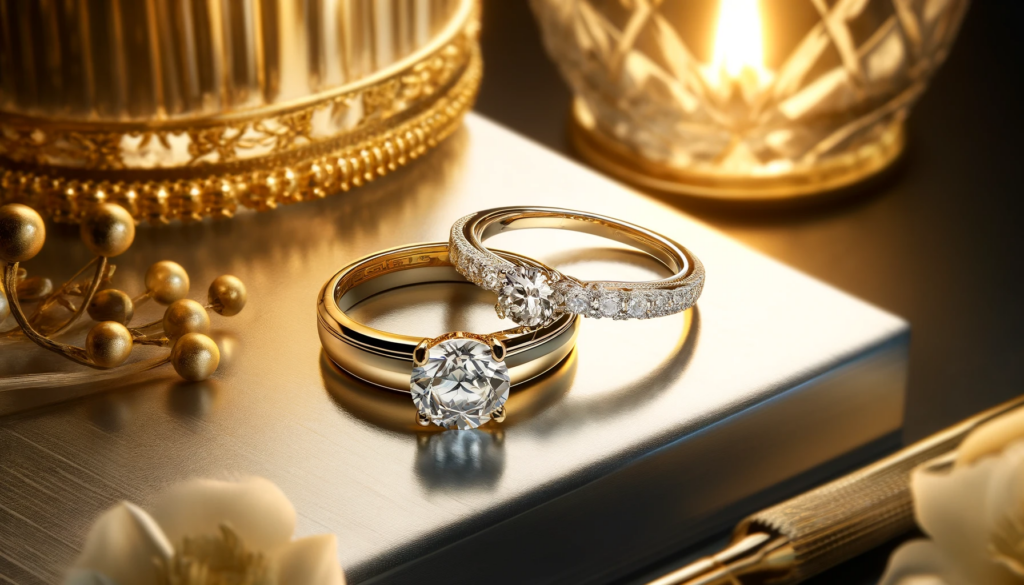
14K Gold Cost Considerations
At the time of writing, 14K gold has a value of around $33 per gram.
The exact price of gold changes over time, and 14K gold will always be worth less than 18K, 22K or, of course, 24K gold – but it’s safe to say that it will always have value. But, for any piece of jewelry, its sentimental value is likely to exceed its financial value over the years.
Is 14K Worth the Cost?
In our opinion, yes, 14K gold is more than worth the additional cost. You’re paying for the prestige, beauty, and significance of gold, as well as the strength you need to entrust an expensive diamond to it.
Sure, 10K gold has its own beauty, but most people who decide on a yellow gold ring rather than one made of platinum, for instance, have done so for a very good reason: because they favor the warm, rich, and lustrous look of yellow gold.
Most of us wouldn’t want a 24K gold ring, even if it were strong enough. Pure gold features a garishly strong color that doesn’t appear all that natural against the skin – fine for occasional wear, but not versatile enough to be worn every day. Softening that color with alloy creates something totally new – and, to many, more beautiful.
14K gold offers the perfect representation of that new color and, to us, is more than worth the cost.
Our Expert Take
As one of the most popular karat types of gold engagement rings and wedding bands, it represents a very strong option (if not the strongest) for anyone looking to balance strength with beauty.
Something that shoppers rarely anticipate is the fact that, when it comes to gold karat, the right choice does not always come down to cost. Most people presume that those with more flexible budgets will always gravitate toward the highest karat possible, while the rest are ‘budget-friendly’ alternatives.
It is true, of course, that each karat type represents a step down in value the further you get from pure gold. 10K is the ‘cheapest option’ for shoppers, while 18k is generally considered the most expensive since 22K and 24K gold are not advised for engagement rings.
But the truth of the matter is that some people simply prefer the slightly softer warmth of 14K gold over the bolder hue of 18K – and will spend less on their engagement ring setting simply because of personal preference, rather than economy.
8 FAQs
- Q: What is 14K Gold?
- A: 14K gold is an alloy containing 58.3% pure gold, with the remainder made up of other metals like copper, silver, or zinc, enhancing its strength and durability.
- Q: Why Choose 14K Gold for an Engagement Ring?
- A: 14K gold offers a perfect balance of durability, affordability, and purity. It’s strong enough for everyday wear while maintaining a rich gold appearance.
- Q: How Can I Tell if My Ring is Real 14K Gold?
- A: Real 14K gold will have a hallmark stamp such as “14K,” “14KT,” or “585.” If you’re uncertain, a professional jeweler can conduct a test to verify its authenticity.
- Q: Is 14K Gold Resistant to Tarnishing?
- A: 14K gold is more resistant to tarnishing than higher-karat gold due to its alloy composition. However, it can still tarnish over time and requires proper care.
- Q: Can 14K Gold Trigger Allergic Reactions?
- A: Yes, 14K gold can cause allergic reactions, especially if it contains nickel. If you have sensitive skin, look for nickel-free gold alloys or consider a higher gold purity.
- Q: How Do I Clean My 14K Gold Engagement Ring?
- A: Clean your 14K gold ring with a solution of warm water and mild dish soap. Gently scrub with a soft brush, rinse in warm water, and dry with a soft cloth.
- Q: Can I Wear My 14K Gold Ring in the Shower?
- A: It’s best to remove your 14K gold ring before showering. Chemicals in soaps and shampoos can dull the gold’s finish, and prolonged exposure to water can weaken the setting.
- Q: Will 14K Gold Wear Down Over Time?
- A: All gold wears down over time. However, 14K gold is durable and, with proper care, can last for decades while maintaining its appearance and structure.
Explore the brilliance of 14K gold with Jeweler AI. Transform your ring selection journey into an effortless, personalized experience. Click here!
FOLLOW-UP GUIDE SERIES

